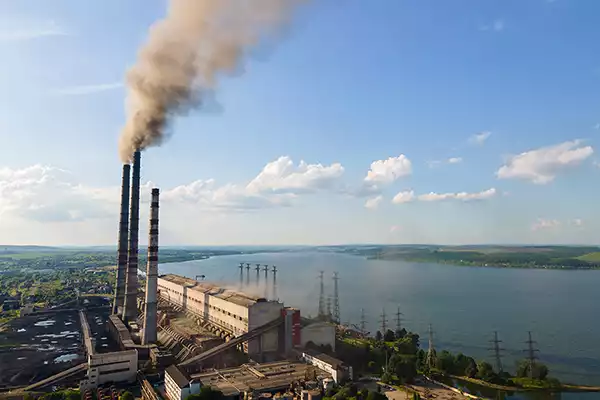

Non-renewable sources of energy such as coal, natural gas and oil are not only the leaders in harmful emissions but are in limited supply. Looking at today’s technology and source there are varying estimates to how many reserves of each remain. Going with averages based on a few different opinions it’s thought that there are about 50 years of oil, 50 years of natural gas and 115 years of coal left. This is of course assuming no advances in technology in the removal of these natural resources, which as fracking has demonstrated seems unlikely.

Coal is the most abundant source of electricity worldwide, currently providing more than 36% of global electricity. In 2019, coal comprised 27% of the world’s primary energy consumption and 36.4% of all electricity generated in the world. The United States holds about one-fourth of all known coal reserves constituting ~90% of all the countries fossil fuel sources. Coal is a major player in the global economy and industrial uses such as the production of steel, use in air purification systems, construction of airplanes and automobiles as well as silicon metal.
Coal is the cheapest form of energy available to billions of people and plays a major role in alleviating “energy poverty”. Approximately 860 million people across the globe currently live without access to electricity. Nearly 2.6 billion people do not have clean cooking facilities. The problem is spread across the developing world, but it is particularly severe in sub-Saharan Africa and developing Asia, which together account for 95% of people in energy poverty.
Unfortunately, although coal is a cheap, plentiful source of energy it comes with many negatives. The mining associated with acquiring coal in and of itself poses significant environmental impacts. Strip mining where massive amounts of earth in some cases entire mountaintops are removed. The removal of such large amounts of land lead to erosion, often streams are covered with rock and dirt, loss of habitat and wide scale pollution. Emissions are the most often cited negative and CO2 usually is the most well-known. However, Sulfur dioxide, Nitrogen oxides, Mercury, and particulate matter are all part of burning coal as well as the large amounts of coal ash left behind.
The storage of coal ash led to the worst industrial accident in United States history. On December 22, 2008, ~5.4 million cubic yards (1.1 billion US gallons) of coal ash burst through a dike at the Kingston Fossil Plant in Kingston TN, spilling into nearby waterways and covering to approximately 300 acres.
Energy efficiency varies but about 33% is the average for most coal powered plants, with the maximum efficiency from state-of-the-art facilities around 45% with the rest lost to heat. With such low efficiency and considerable environmental impacts, it would be best to focus on other energy options as soon as possible.

On first glance, natural gas (NG) looks like pretty good choice for energy production. It currently contributes about 21% of the worlds energy and burns cleaner than coal. Headlines (usually from the natural gas industry) noting that 93% of the energy that leaves the ground reaches your home and only 7% is lost in the drilling and distribution process, leave out some details. Although that may be technically correct, they are not talking about energy efficiency. Due to the fact that much of the energy is lost as heat, actual energy efficiency is ~50% and CO2 is released as the gas is burned.
Unfortunately, NG contains about 80-95% methane. Methane is released during the extraction of natural gas, a strong greenhouse gas that’s approximately 28 times more potent than CO2 using the Global Warming Potential 100 (GWP100). Ethane is also a consideration as natural gas is being extracted, coming in at about 5 times the GWP of CO2. Ethane however can be used in the production of plastic bags, if not, it is typically burned off releasing carbon dioxide and water vapor.
In order to increase yields fracking is often involved. This process requires the high-pressure injection of fluids into a wellbore in order to create cracks in deep rock formations. These cracks can be hundreds or even thousands of feet deep and may include both horizontal and vertical sections. Using this technique has increased production about 36%. There is much debate about the amount of methane that is leaked into the atmosphere during this process and the extent seismic activity is influenced. In addition, there are serious concerns with groundwater pollution, in some cases water sources have been left totally unusable.

Oil is used for approximately 40% of the world’s energy, with the majority going to transportation and heating with a smaller portion for electricity generation. The average efficiency of oil is about 38% for oil fired power generation with the remaining lost to heat.
Oil is a mature technology with nearly all modern infrastructure built around it. The extraction of oil is generally accepted as being a straightforward simplified process. Fracking (see NG) has increased yields considerably in recent years and it’s an easy to store, reliable source of energy.
As with any fossil fuel there are considerable drawbacks to using oil as a major source of energy.
Air pollution tops the list with the release of CO2 through combustion being the most well-known, the amount released second only to coal. Large amounts of land are used or disturbed leading to habitat loss. Ocean pollution as a result of offshore operations and the release of greenhouse gases during production, transport and refinement, each with their own negative environmental impacts. Pipelines which are generally a safer mode of transport can be devastating should an accident take place. The interprovincial pipeline in Canada leaked over 50,000,000 liters of oil (13,208,602 gallons) between the years 1962 and 1996 into the environment.
Oil may be the most difficult source to transition from due to the sheer volume of products made from it. One 42-gallon barrel of oil creates about 19.4 gallons of gasoline. The remaining oil is used to make any number of up to 6000 different products. For example, petrochemicals are used to manufacture CD’s, DVD’s, analgesics, antihistamines, antibiotics, antibacterials, cough syrups, creams, ointments, salves, and many gels. Processed plastics made with oil are used in heart valves and other esoteric medical equipment just to name a few.